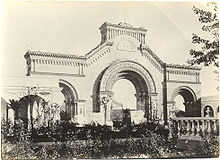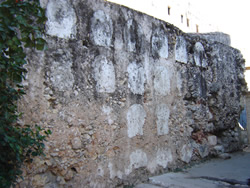Funerary traditions have distinguished different civilizations throughout the history of mankind. Since ancient times, this type of ritual, including burial, was carried out in religious temples.
Every human being found there a place for the final rest, only that within the enclosure, the place given to him depended on the level that the deceased would occupy in life. Of course, this type of habit was detrimental to public health and the happy development of the religious ceremony. But this serious problem was given a definitive solution with the real cedula granted in the eighteenth century, which put an end to this custom.
According to history, in Cuba the first cemetery outside a church was built.
This happened under the government of Don Salvador De Muro and Salazar, Marquis of Someruelos, who ordered to build such a site between the current streets of San Lázaro, Vapor, Aramburu and Espada. After being officially called the General Cemetery of Havana, it would be renamed the Espada Cemetery, in honor of the Bishop of Espada y Landa, whose hand was decisive for its culmination. This prelate financed with his own wealth the total realization of the work, as well as the three black slaves with an equal number of carts pulled by horses for the transfer of the bodies.
The building was directed by an architect D. Aulet. The paintings that adorned it carried the signature of the Venetian José Perovani. It was officially inaugurated, with all due solemnity, on February 2, 1806.
The first remains taken to the new cemetery were those of the former General Captain Don Diego Manrique, who were exhumed from the church of San Francisco de Asís; as well as those of the Bishop of Milaza, José González Cándamo, who was governor of the miter of Havana, and who had been exhumed from the Cathedral.
Those courtships left from the chapel of the Casa de Beneficencia, located where the Hermanos Ameijeiras Hospital stands today. The corpses were transferred in black velvet boxes distinguished with gold. Distinguished by the sumptuous funerary activities of the time then.
CUBA CONSTRUYÓ EL PRIMER CEMENTERIO FUERA DE LA IGLESIA EN LATINOAMERICA.
Las tradiciones funerarias han distinguido a las distintas civilizaciones a lo largo de la historia de la humanidad. Desde los tiempos remotos, este tipo de rituales, incluido el enterramiento, se llevaban a cabo en templos religiosos.
Todo ser humano encontraba allí sitio para el descanso final, solo que dentro del recinto, el lugar que se le diera dependía del nivel que socialmente ocupara en vida el occiso. Claro, este tipo de hábito iba en detrimento de la salud pública y el feliz desarrollo de la ceremonia religiosa. Pero a este serio problema se le dio solución definitiva con la real cédula otorgada en el siglo dieciocho, que ponía fin a esta costumbre.
Según recoge la historia, en Cuba se construyó el primer cementerio fuera de una iglesia.
Esto ocurrió bajo el gobierno de Don Salvador De Muro y Salazar, Marqués de Someruelos, quien mandara a cimentar tal sitio entre las actuales calles de San Lázaro, Vapor, Aramburu y Espada. Después de llamarse de modo oficial Cementerio General de la Habana, sería rebautizado como Cementerio de Espada, en honor al Obispo de Espada y Landa, cuya mano fuera decisiva para su culminación. Este prelado financió con su propio caudal la realización total de la obra, así como los tres negros esclavos con igual número de carretones tirados por caballos para el traslado de los cuerpos.
La edificación fue dirigida por un arquitecto D. Aulet. Las pinturas que lo engalanaban llevaron la firma del veneciano José Perovani. Quedó oficialmente inaugurado, con toda la solemnidad debida, el 2 de febrero de 1806.
Los primeros restos llevados al nuevo cementerio fueron los del ex Capitán General Don Diego Manrique, que fueran exhumados de la iglesia de San Francisco de Asís; así como los del Obispo de Milaza, José González Cándamo, quien fuera gobernador de la mitra de la Habana, y que habían sido exhumados de la Catedral.
Aquellos cortejos partieron de la capilla de la Casa de Beneficencia, situada donde hoy se levanta el Hospital Hermanos Ameijeiras. Los cadáveres fueron trasladados en cajas de terciopelo negro distinguidas con oro. Distinguidas por las suntuosas actividades funerarias de la epoca entonces.
Agencies/CubaPerdida/Internet Photos/ Arnoldo Varona/ TheCubanHistory.com
THE CUBAN HISTORY, HOLLYWOOD.









